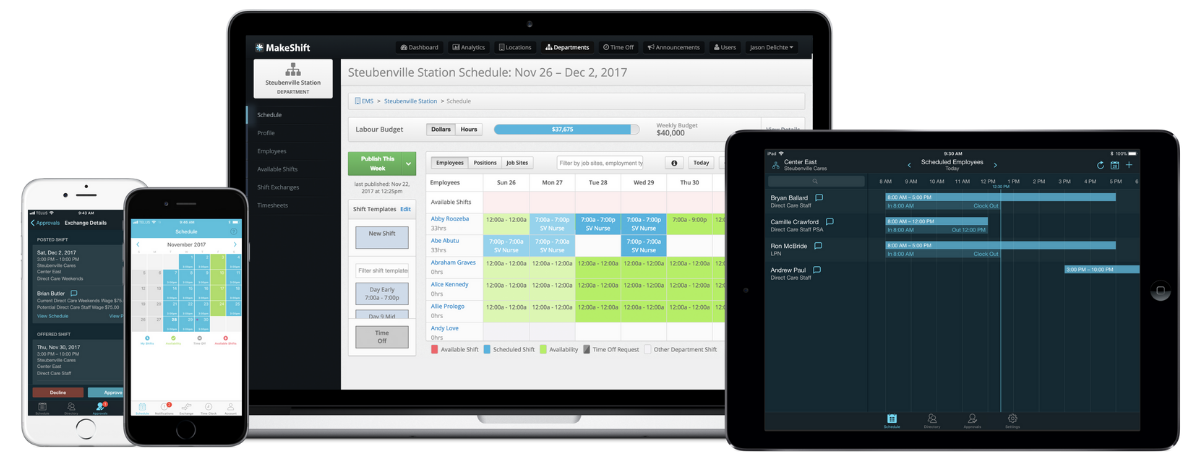Employee burnout is more than just a rough day, or even a week, at the office – it's a chronic state affecting workers globally.
Burnout is running rampant in today’s workforce, affecting employees’ mental and physical health and the success of many companies.
However, the battle against burnout has a high-tech ally — artificial intelligence (AI).
Today, we'll dive into how AI isn't just predicting schedules. It's actively combating burnout, boosting employee well-being, and changing the global workplace game.
- What’s Employee Burnout?
- The Prevalence of Employee Burnout Today
- 7 Ways AI Can Prevent Employee Burnout and Boost Well-Being
- AI for Employee Burnout FAQs
- ShiftMate AI — The Top AI-Powered Scheduling Platform
- Head Off Employee Burnout With the Help of AI
What’s Employee Burnout?
Employee burnout isn’t fixed with a good night’s sleep or one relaxing 2-day weekend.
Because burnout comes from excessive overworking and it takes a toll on employees.
It’s a state of chronic emotional and physical exhaustion resulting from prolonged work-related stress. Symptoms include feelings of cynicism, detachment, and a sense of reduced accomplishment.
Unfortunately, in the U.S., it’s as common as the awkward silence on an elevator full of strangers.
According to a recent study conducted by the American Institute of Stress, 83% of U.S. workers suffer from work-related stress. This contributes to increased absenteeism, diminished job performance, and a negative impact on mental health.
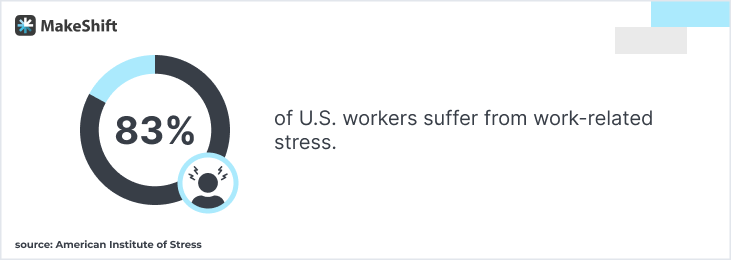
The Prevalence of Employee Burnout Today
Employee burnout isn’t limited to the U.S., but Americans are top-tier leaders in the “Cult of Overwork.”
- 10.4% of American adults work 50+ hours per week on average — 49% higher than the global average
- Burnout costs companies $125 billion to $190 billion annually in healthcare costs.
- Businesses lose roughly $300 billion a year due to absenteeism, reduced productivity, and turnover caused by job stress.
Even so, employee burnout transcends geographical boundaries, affecting workplaces on a global scale. It appears in diverse professions, spanning healthcare, technology, finance, and customer service.
There’s no one primary culprit causing burnout. Heavy workloads, poor work-life balance, insufficient job resources, and unhealthy company culture trigger it.
4 Ways Burnout Impacts Productivity, Engagement, and Employee Well-being
Spotting the telltale signs isn’t rocket science. If you have overworked, burned-out employees on your staff, You’ll see several areas impacted:
- Plummeting productivity — Burnout leads to decreased energy levels, affecting employees' ability to concentrate and deliver optimal performance.
- Diminished engagement — Burnout erodes an individual's enthusiasm for their work. This results in decreased engagement and commitment to the organization.
- Negative effects on well-being — Prolonged burnout negatively impacts mental and physical well-being. It leads to more absenteeism, higher healthcare costs, and, typically, a revolving door of employees.
- Organizational consequences — Like…
- High turnover rates — Burnout often prompts talented employees to seek opportunities elsewhere, leading to increased turnover.

- Overworked employees are 2.6 times more likely to leave their jobs than employees with a healthy work-life balance.
- Negative company culture — A workplace culture where burnout is prevalent can hinder collaboration, innovation, and overall employee morale.
7 Ways AI Can Prevent Burnout and Save Your Employees
Thought leaders today know that prioritizing employee well-being is a proactive way to head off burnout, improve company culture, and boost retention rates.
Using AI to accomplish this reduces time spent on redundant tasks, improves the accuracy of tasks, AND sets a precedence of putting employee well-being first.
We’ve listed 7 areas to proactively prevent employee burnout and software to help you jump into action.
1. Emotional well-being monitoring
AI-based sentiment analysis and natural language processing techniques can detect early signs of employee emotional distress or burnout.
AI systems can recognize individuals who might be vulnerable and offer prompt interventions, such as access to mental health resources or adjustments to their work conditions.
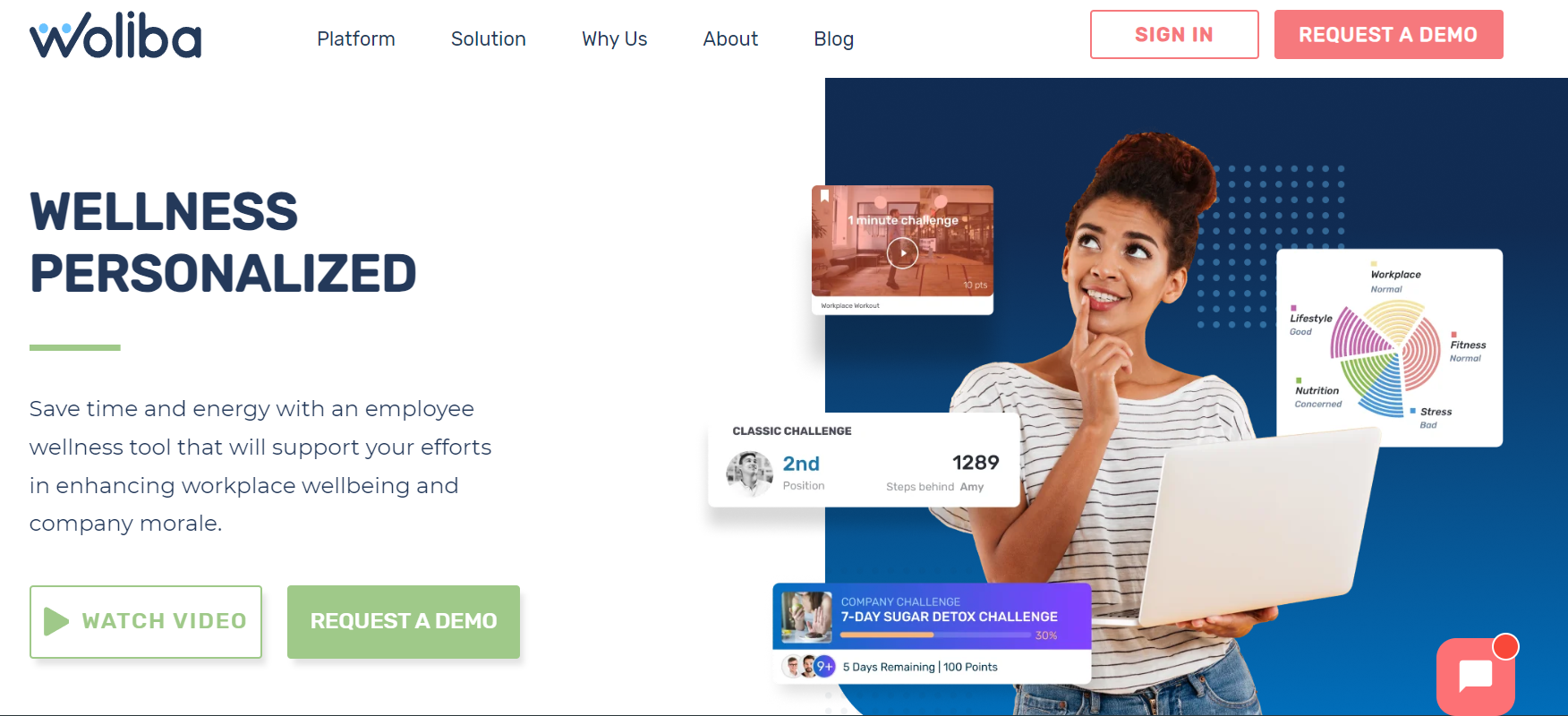
Woliba is a digital health tech company that offers a comprehensive employee wellness platform. It supports employee wellness, engagement, recognition, and rewards.
2. Virtual health and wellness assistants
AI-powered virtual assistants with health and wellness features can support employees’ physical and mental well-being.
These employee assistance programs (EAPs) can remind your staff to:
- Take breaks
- Engage in physical activity
- Practice mindfulness
These programs can even offer guided meditation sessions, promoting work-life balance and helping to combat employee burnout.
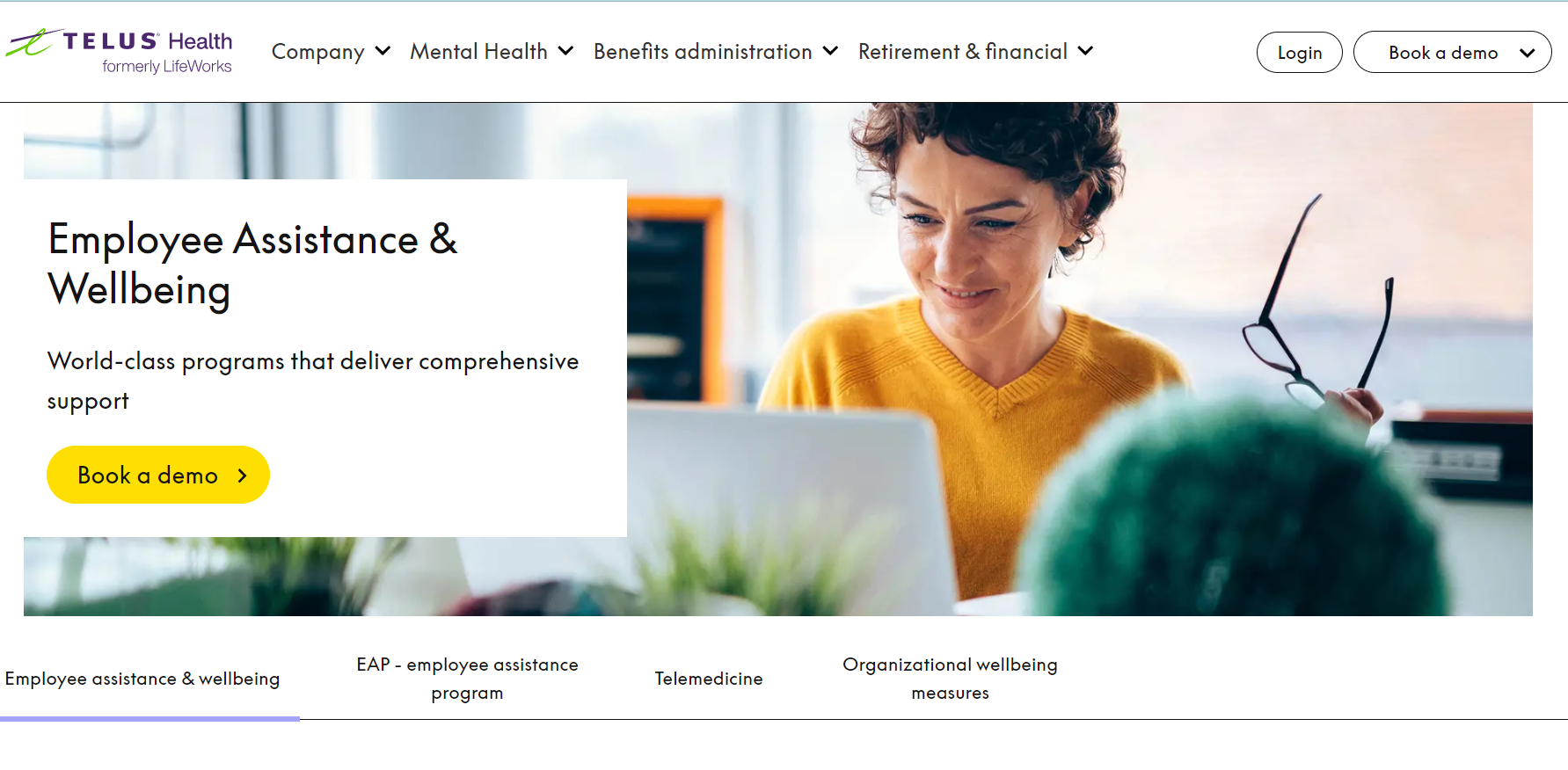
TELUS offers a well-being program that offers a full-service health and wellness platform. It offers 24/7 wellness resources and other health-related services like wearable tech.
The platform collects employee assessment info and provides personalized wellness tips and recommendations to support overall well-being.
3. People-first staff scheduling
AI-powered staff scheduling can revolutionize your staff scheduling in a fraction of the time it takes you to create schedules now.
AI can account for employee availability and time off requests, analyze past schedules and workforce needs, and offer scheduling suggestions.
Employees are empowered by having more say in their work schedule — in fact, flexible scheduling ranks higher for many workers than other perks.
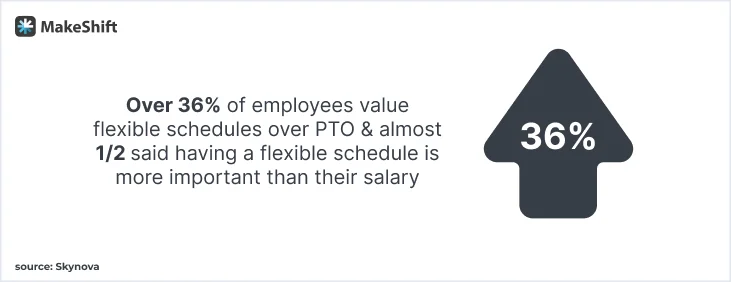
In 1 study, over 36% of surveyed employees valued their flexible schedule over PTO, and almost half said having a flexible schedule trumps their salary.
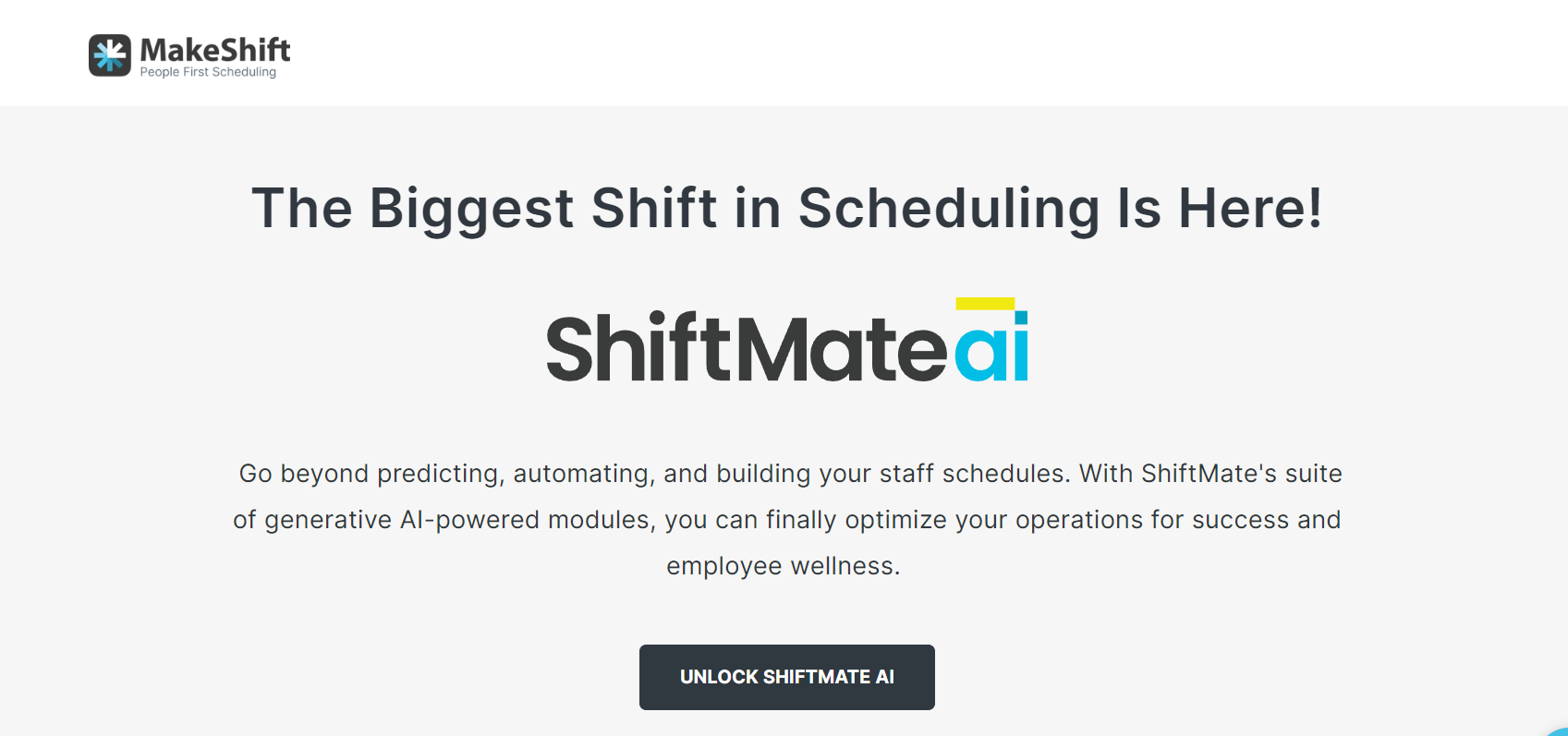
ShiftMate AI from MakeShift surpasses baseline prediction, automation, and schedule creation. The generative AI modules help you optimize your operation and prioritize employee wellness all in one platform.
4. Feedback & Recognition
AI can facilitate regular feedback channels, providing constructive feedback and recognizing employees' achievements.
Positive feedback and kudos can contribute to a positive workplace vibe and reduce the risk of burnout.
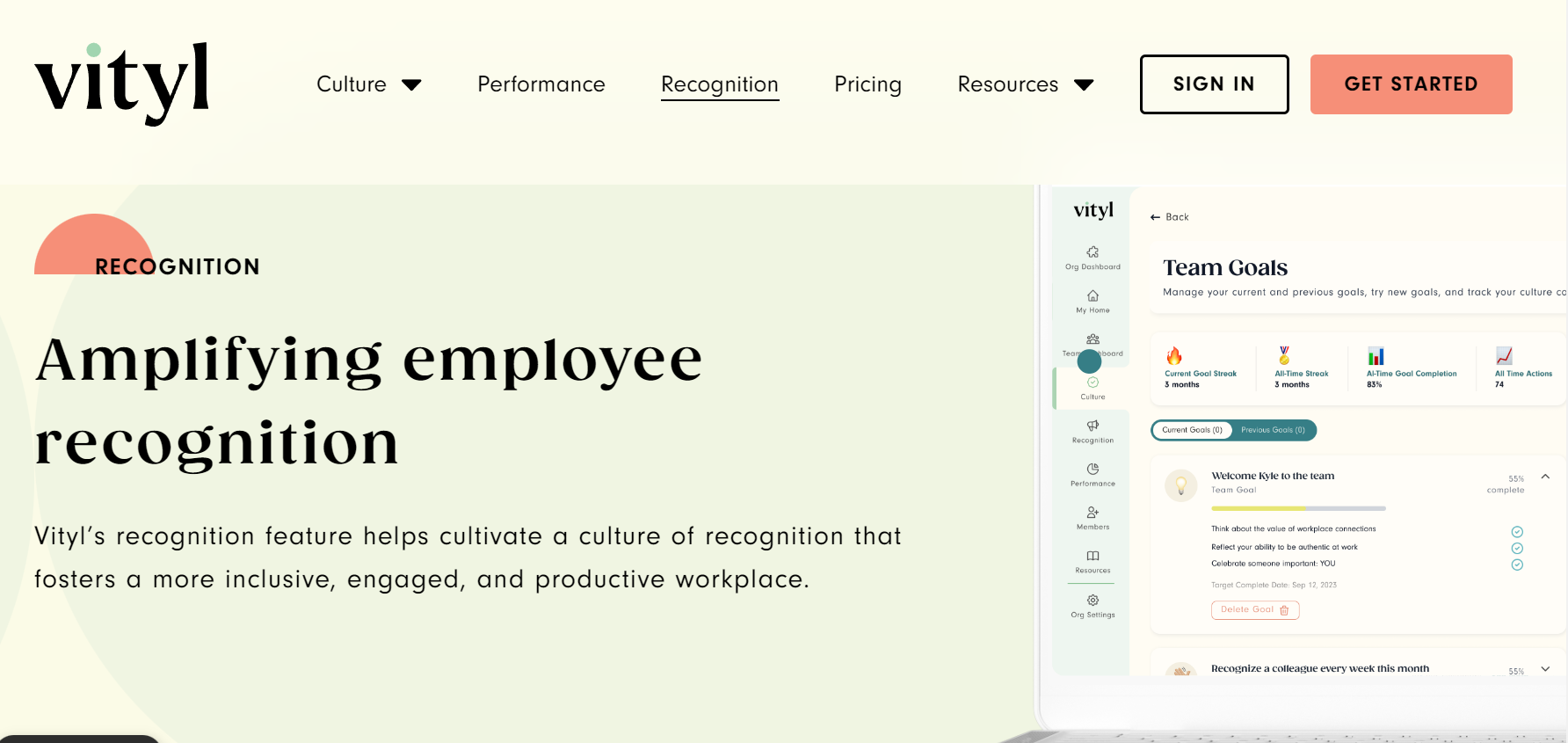
Vityl is AI-powered employee recognition software that empowers you to develop a culture of appreciation and recognition. It has a unique, customizable set of AI-powered features to cultivate an atmosphere of appreciation and enhanced employee engagement.
5. Workforce management
AI algorithms can predict peak workloads, foresee potential burnout risks, and suggest resource allocation strategies.
By optimizing your workforce, you can maximize productivity while ensuring employees aren’t overwhelmed by excessive work. Proactively approaching workforce management can prevent burnout by divvying up the workload.
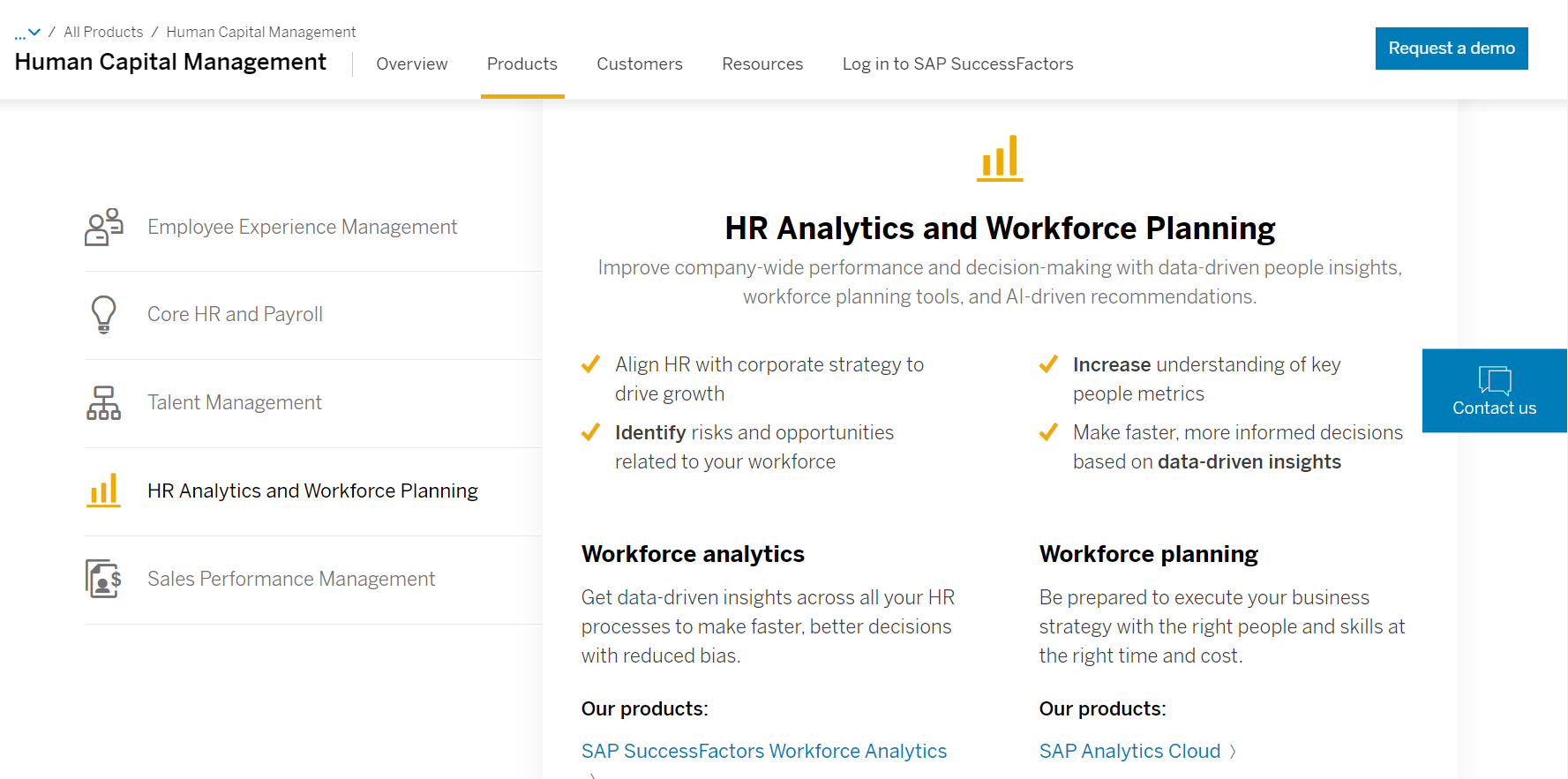
SAP® SuccessFactors HXM Suite is the pièce de résistance in workforce management. SAP offers intuitive, intelligent workforce planning tools that prioritize employee well-being while streamlining workforce planning.
6. Smart task management
AI-powered tools aid employees in prioritizing tasks, optimizing workloads, and crafting efficient schedules.
These solutions use machine learning algorithms to scrutinize work patterns, pinpoint bottlenecks, and offer personalized recommendations. This empowerment enables your employees to manage their time effectively, steering clear of burnout.
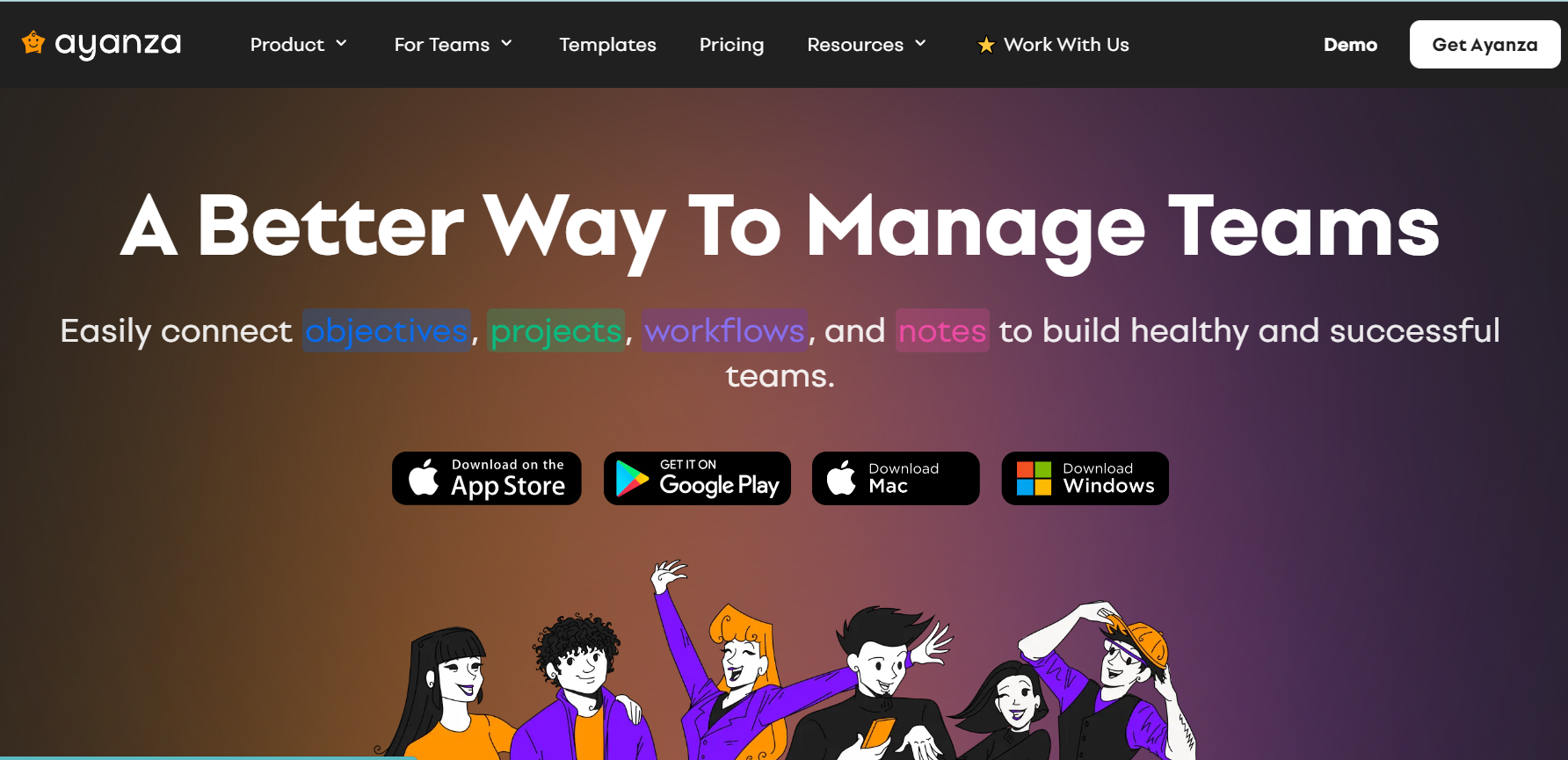
Ayanza uses AI algorithms to analyze user behavior and preferences to provide helpful suggestions and reports. It offers retrospectives and suggests what to focus on and how to be more productive in the future.
7. Personalized learning and development
AI-driven learning platforms can deliver personalized training programs tailored to each employee’s needs.
Through evaluating skill gaps and preferred learning approaches, these systems deliver tailored learning materials and recommendations, nurturing professional growth and enhancing job satisfaction.
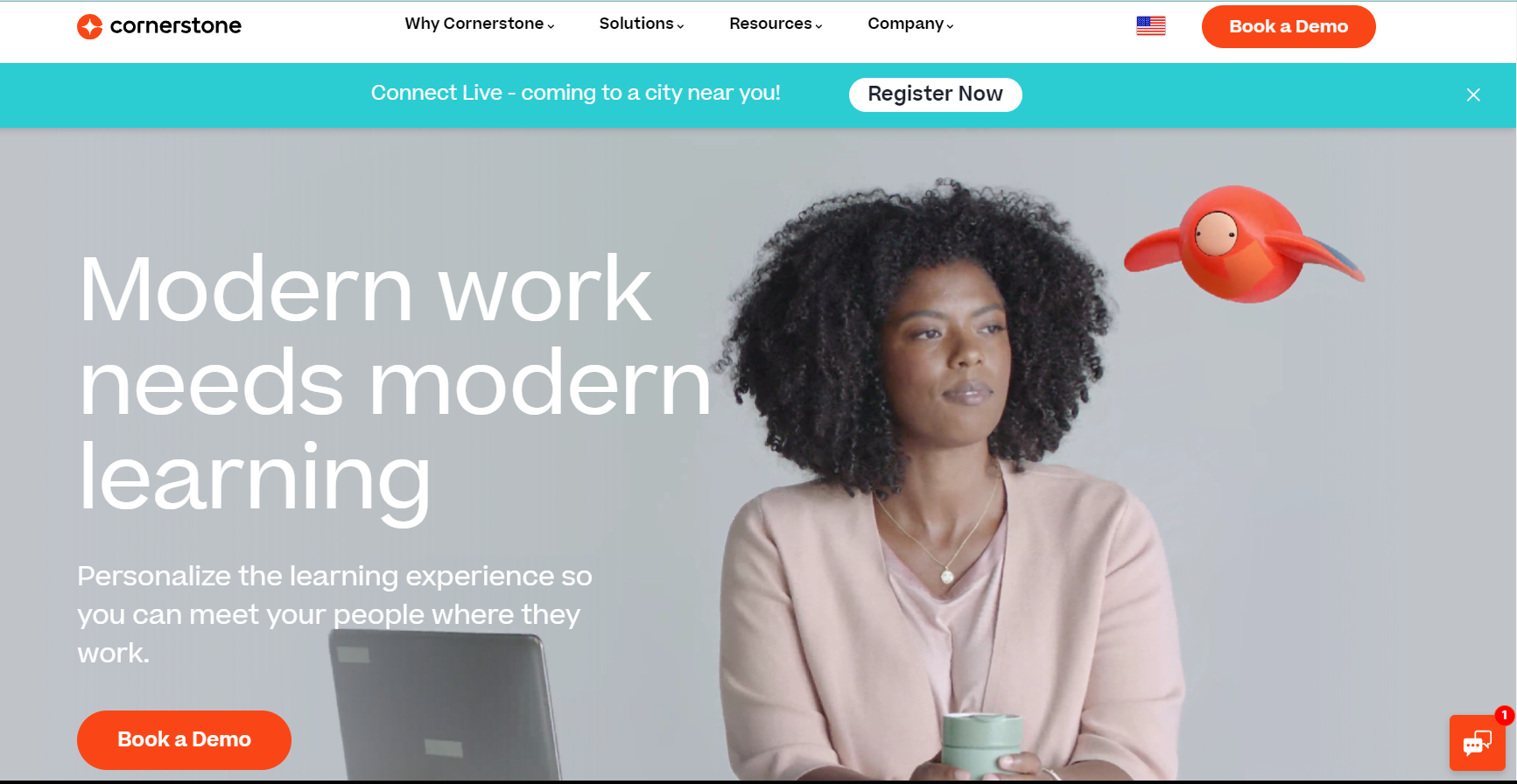
Cornerstone is an AI-powered platform that offers employees a seamless learning and growth experience. It provides a personalized learning experience for employees through automation focused on delivering training content to learners based on your workforce's needs, goals, and preferences.
AI for Employee Burnout FAQs
How can artificial intelligence tackle workplace stress?
AI addresses workplace stress by automating routine tasks, freeing time for more meaningful work. Analytics identify stress indicators, enabling timely interventions.
Emotional intelligence in virtual assistants provides personalized support, potentially reducing overall workplace stress.
How can AI help employees?
AI helps employees automate repetitive tasks, streamline workflows, and enhance productivity. Virtual assistants and personalized tools provide a more efficient and fulfilling work experience.
How can AI help with burnout?
AI can assist with burnout by identifying early signs through data analytics.
Automation of routine tasks reduces employee workload, and AI-driven support systems provide timely interventions and resources, promoting better work-life balance.
How does AI affect employee experience?
AI positively influences employee experience by optimizing processes, offering personalized support, and fostering a more engaging work environment.
Automation and data-driven insights increase efficiency and job satisfaction, ultimately enhancing employee experience.
ShiftMate AI — The Top AI-Powered Scheduling Platform
MakeShift’s ShiftMate AI brings brand new features to the staff scheduling world to help combat burnout, like:
- Real-time assistance
- Automated scheduling
- Future forecasting
- Employee well-being monitoring
- Effortless schedule requests
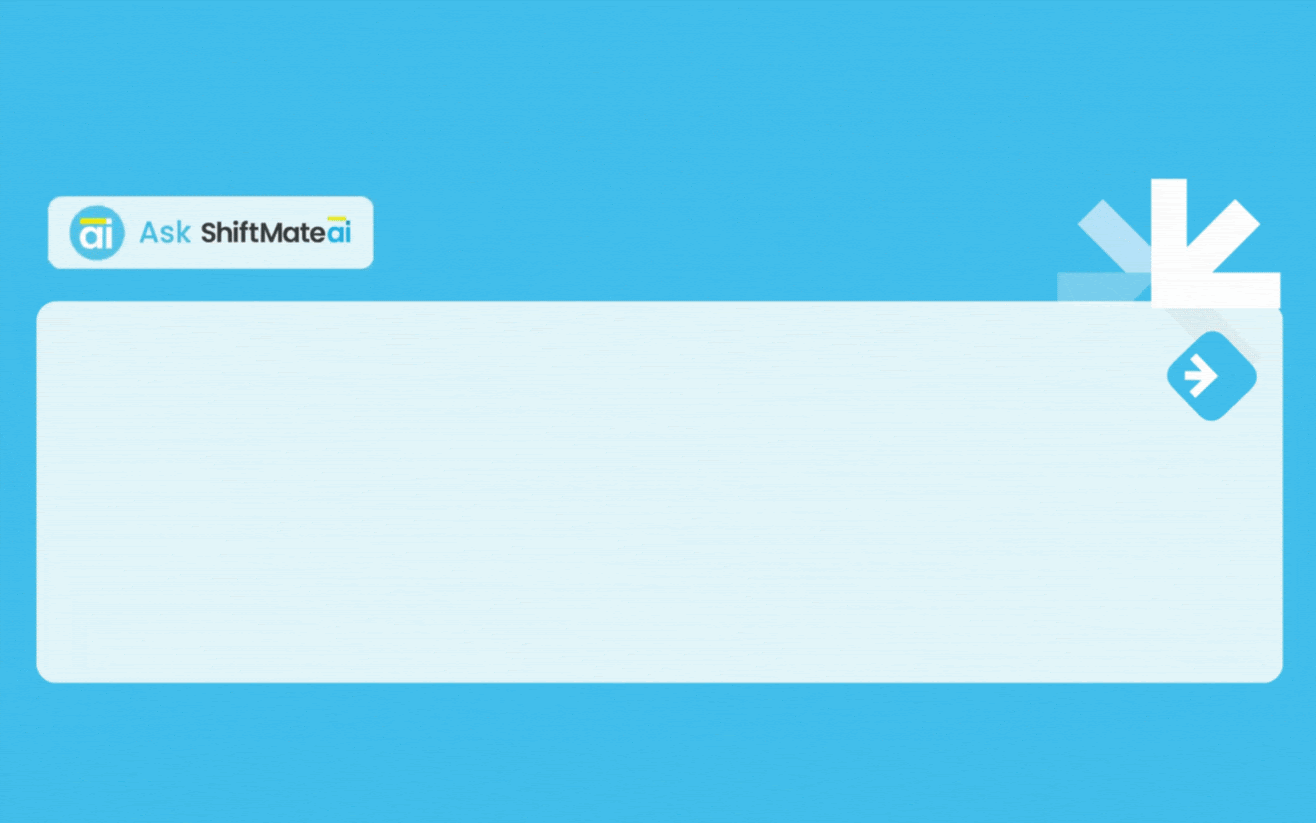
SmartSupport — Provides AI-powered 24/7 support ready to provide scheduling help on-demand. You’ll get:
- Real-time responses to your questions
- Step-by-step instructions
- Scheduling tips
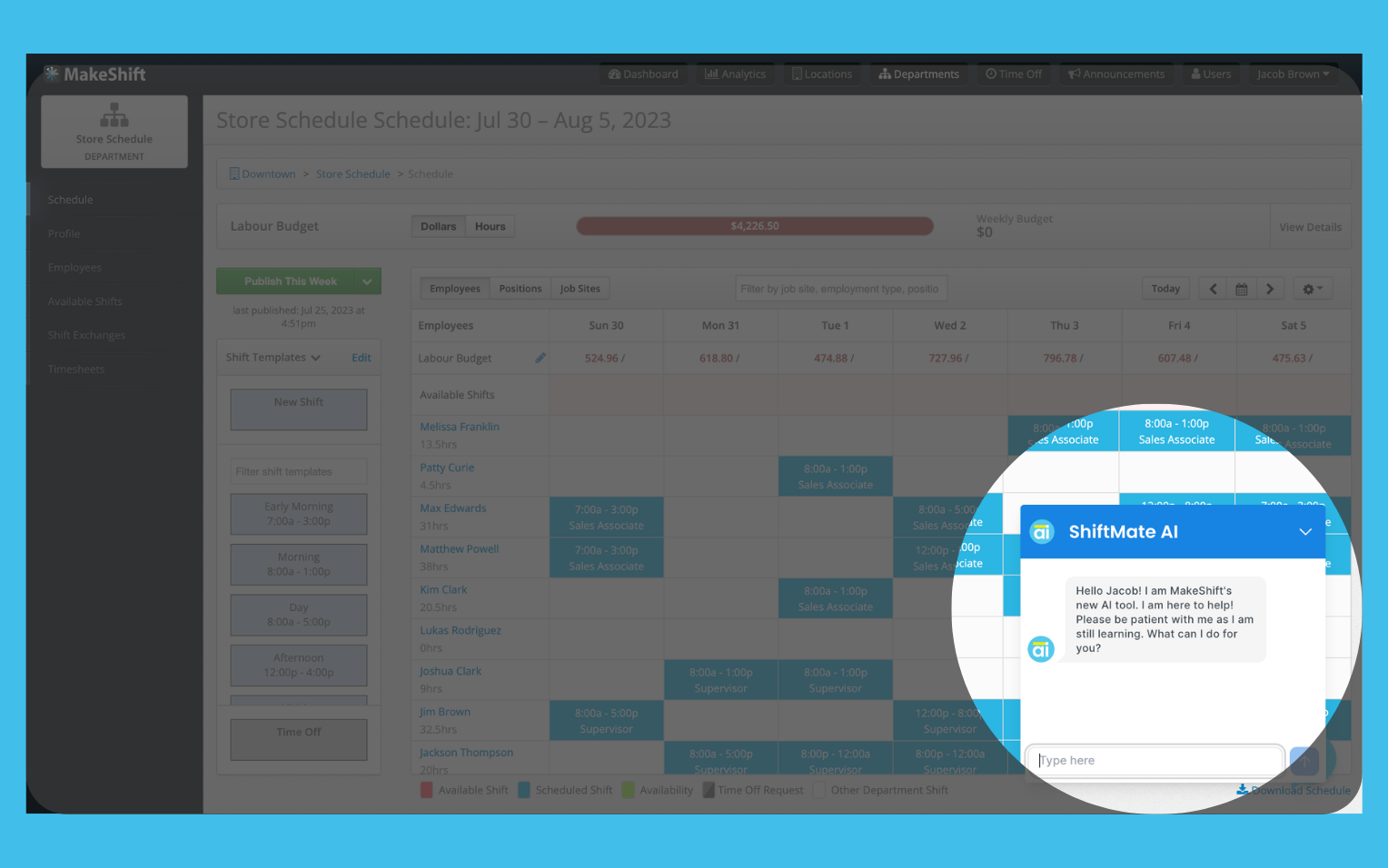
ShiftPredict powered by Ikigai Labs — analyzes historical data and stitches it with other data sets using AI tech from Ikigai Labs. ShiftPredict then accurately identifies patterns like:
- Patient volume in healthcare
- Customer footfall in retail
- Occupancy rates in hospitality
It empowers you to fine-tune your schedules, considering union agreements, budgetary limits, and employee wellness metrics like burnout and fatigue.
Head Off Employee Burnout With the Help of AI
Recognizing the signs and impact of burnout in workplaces globally is vital to preventing it.
Leverage the capabilities of AI as your proactive strategy to prevent burnout and enhance overall employee well-being.
From emotional well-being monitoring to predictive workforce management, AI offers a versatile toolkit. You can foster a healthier work culture by addressing burnout's root causes and symptoms through intelligent automation and personalized support.
ShiftMate AI, with its innovative features and SmartSupport, exemplifies how AI can revolutionize scheduling and support employees in real time. Schedule a FREE demo to see ShiftMate AI in action.




